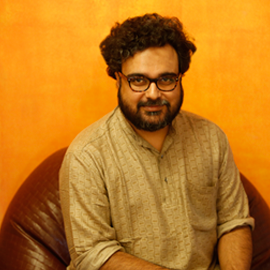Smoke without fire: what Modi's Gaya rally tells us

Narendra Modi's public rallies have some trademark ingredients - blustery rhetoric laced with voice modulation, active responses from the audience, chants of 'Modi, Modi' and loud sloganeering in his support. Surprisingly, these elements are missing from the his rallies in Bihar.
Modi addressed a rally in Gaya on 9 August - his second in the state in just over two weeks - accompanied by the entire state NDA leadership, close aide and BJP president Amit Shah, and many other leaders from his party.
He began with praise for Jitan Ram Manjhi, the former JD(U) chief minister and now NDA ally. Manjhi hails from the Gaya region, which lies in the politically-important Magadh division.
But as the speech unfolded, it was clear that this time around, the buzz was just not the same as it was a year ago.
The body language lacked confidence; the speech was so aggressive that it indicated the insecurity of the party.
The numbers at the rally were good, but observers say that had more to do with ticket aspirants - there are many for each seat and each brought crowds as a show of strength. Crowd interaction, such a big part of Modi's rallies during the Lok Sabha campaign, was extremely low.
Modi, though, praised the large gathering, and added: "The public has taken two decisions. The first is to make a modern, strong and new Bihar. The second is to bring change."
However, it was all downhill from there. Political observers criticised the contents of the speech, stating it was not as mature and confident as they have come to expect from a man of the PM's oratory skills. Some parts of his speech were also labelled as mistakes and miscalculations.
Here are the five key points from the speech that illustrate this criticism and highlight how the level of Modi's discourse has fallen.
Most of Modi's speech was laced with personal and blunt attacks on both Nitish Kumar and Lalu Prasad Yadav.
The PM said, "It is time to get rid of jungle raj (Lalu) and arrogant government (Nitish)."
A few weeks ago, Nitish had quoted folklore and talked about snakes wrapped around sandalwood trees. While some had interpreted it as a veiled attack on Lalu, he had later clarified that the reference was to his former ally, the BJP.
Taking a pot-shot at this, Modi called the foes-turned-allies 'Chandan Kumar' and 'Bhujang (snake) Prasad'
The PM also said JD(U) stands for Janata ka Daman aur Utpeedan (oppression and harassment of people), while the RJD stands for Rozana Jungle-raj ka Darr (daily fear of jungle rule).
Making a direct reference to Lalu, Modi said, "Jail se koi achhi baat seekh ke lauta hai kya? (Has anyone learnt anything good by going to jail?)"
He added, "Jungle raj part-1 was without jail experience; now with jail experience, there will be jungle raj part-2."
The PM asked people if they wanted jungle raj to return to the state. As an example of this, he invoked the murder of a BJP worker in the state capital, and said jungle raj was back.
He went one step further, stating, "jo zeher pee rahe hain who zeher hi uglenge (those who drink poison will only regurgitate poison)", hinting that people can't get anything but 'poison' out of the Nitish-Lalu alliance.
The core theme of the speech was to bring the fear factor to the forefront. Modi warned that if the existing government came back, things would go from bad to worse for the youth - there would be no hope of their aspirations becoming reality.
In what could be construed as a threat, he also talked about the opportunity to elect a government that was aligned to his government at the Centre.
"Delhi se vikas ki Ganga beh rahi hai. Ulta lota lekar jayenge to kuch nahi milega (the Ganga of development is flowing from Delhi. If you take your vessel the other way, you won't get anything)," he said.
[twittable]The PM's speech was so aggressive that it indicated the insecurity of the BJP. Crowd response was lukewarm[/twittable]
He also harped on the already existing fear that the Nitish-Lalu alliance would break down sooner than later.
"Yeh jo aaj gathbandhan bana hai, woh chunav ke baad bachega kya? (will this alliance last after the election?)"
In his speech, he talked about creating opportunity for the youth in higher education and professional courses, by expanding the number of seats.
Modi mentioned how the state is far behind many smaller states in terms of development, electricity being a prime example.
He said, "Every state in the country has IAS and IPS officers from Bihar. The state provides the best human resources to the country. However, people are forced to migrate and work in other states."
He also cited the poor tourism in Bihar and said, "More people want to come and visit Bodh Gaya than the Taj Mahal, but there are no adequate arrangements."
Modi strongly attacked Bihar government for being unable to bring out the state from its BIMARU (ailing) status. BIMARU was a term coined in the 1980s to club together Bihar, Madhya Pradesh, Rajasthan and Uttar Pradesh, the most backward regions of the country, with an allusion towards their 'sick' status.
The PM emphasised the examples of Madhya Pradesh and Rajasthan as examples of why Bihar needed to bring in a BJP/NDA government. He said that MP and Rajasthan, under BJP rule, have developed very fast and can hardly be called BIMARU any more.







![BJP's Kapil Mishra recreates Shankar Mahadevan’s ‘Breathless’ song to highlight Delhi pollution [WATCH] BJP's Kapil Mishra recreates Shankar Mahadevan’s ‘Breathless’ song to highlight Delhi pollution [WATCH]](https://images.catchnews.com/upload/2022/11/03/kapil-mishra_240884_300x172.png)

![Anupam Kher shares pictures of his toned body on 67th birthday [MUST SEE] Anupam Kher shares pictures of his toned body on 67th birthday [MUST SEE]](https://images.catchnews.com/upload/2022/03/07/Anupam_kher_231145_300x172.jpg)






